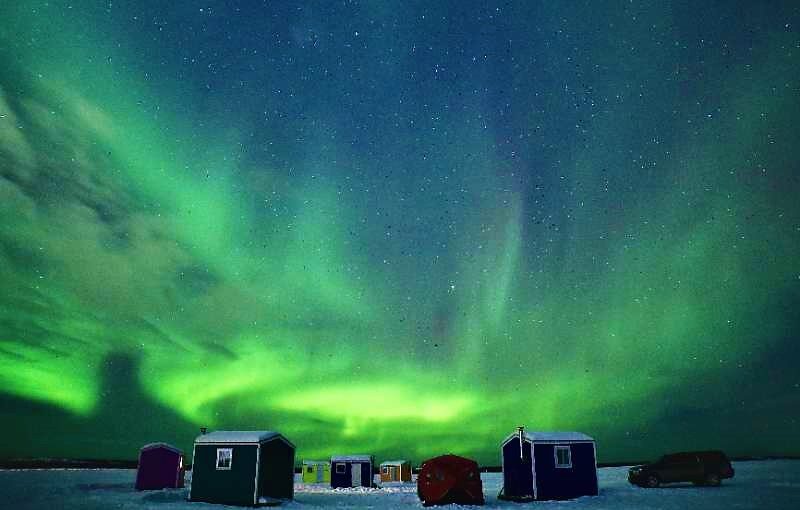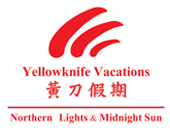
Yellowknife, Canada is one of the best spots on Earth to see the mesmerizing beauty of the aurora borealis. Every year, photographers and nature lovers from across the globe travel to this northern Eden to photograph the twinkling hues above. That said, taking pictures of the aurora can be tough: It takes the right gear, exposure settings, and techniques. If you are organizing your own trip to see the auroras with Yellowknife Vacations, here are some professional tips for capturing the best photographs of this natural wonder.
1. Choose the Right Equipment
With the right gear, you can catch the aurora borealis in its full splendor. Here’s what we recommend:
- Camera: A DSLR or mirrorless camera with manual settings is ideal.
- Lens: A wide-angle lens with a large aperture (f/2.8 or lower) will help you capture more light.
- Tripod: Since long exposures are necessary, a sturdy tripod is essential to avoid camera shake.
- Remote Shutter Release: This helps prevent vibrations caused by pressing the shutter button.
- Extra Batteries: Cold temperatures drain batteries quickly, so carry spares.
2. Master Your Camera Settings
As opposed to daytime photography, capturing the northern lights requires several settings to be adjusted to achieve good results. This is how to set up your camera:
- ISO: Start with an ISO between 800 and 3200. Higher ISO values allow more light but may increase noise.
- Aperture: Use the widest aperture possible (lowest f-number) to let in maximum light.
- Shutter Speed: A good starting point is 5 to 15 seconds. If the aurora moves fast, use a shorter exposure time.
- Focus: Autofocus won’t work well in the dark. Set your lens to manual focus and adjust it to infinity.
- White Balance: Use a Kelvin setting between 3000K and 4000K for natural-looking colors.
3. Find the Perfect Location
Light pollution can limit your ability to see the aurora, so it’s important to pick a dark place. Yellowknife is a great place to do this because it has miles and miles of open land with little or no manmade light. Yellowknife Vacations has experts in the field who can take you to optimal spots where nothing but open night sky surrounds you.
4. Dress for the Cold
Some of the best aurora displays in winter when temperatures in Yellowknife can plummet well below freezing. Dress in layers, wearing insulated clothing to keep warm. Big things that will help you stay comfortable while waiting for the lights: waterproof gloves, thermal socks and a balaclava.
5. Be Patient and Stay Alert
The northern lights do not put on a show on command, and there are times when you must be patient and wait for ideal conditions. Check aurora forecasts before you go out, and be sure to give yourself extra time. Typically, the best sighting happens between 10 PM and 2 AM but can be seen earlier and later depending on solar activity.
6. Experiment and Adjust
No two aurora displays are ever the same, so don’t be afraid to play around with your camera settings. If your images are too dark, raise the ISO or slow down the shutter speed. If they’re a bit hot, decrease the ISO, or shorten your exposure time. Switching settings as the aurora changes will enable you to take the best shots.
7. Use Foreground Elements for Composition
This should include something in the foreground, such as trees, mountains, or frozen lakes, for more visually striking photos. It adds concern and depth to your photos and therefore, makes them more powerful and interesting.
8. Edit Your Photos
Aurora shots can improve even more with post-processing. These things are done in software using products like Adobe Lightroom or Photoshop to adjust contrast, sharpness, and noise reduction. Don’t go overboard on the editing, as the most stunning photos are often the ones that look the most natural.
9. Book an Aurora Tour with Yellowknife Vacations
The aurora borealis is one of those things that you dream of photographing, and Yellowknife Vacations makes it easy for you to experience this magical phenomenon. Our professional guides will ensure you get taken to the best spots for viewing, help you get the best camera settings for some of the best photography under the northern lights, and help make sure you enjoy what is the adventure of a lifetime.
Photographing the northern lights requires preparation, patience, and practice. With the right equipment, settings, and techniques, you can capture stunning images of this celestial spectacle. Whether you’re a beginner or a seasoned photographer, booking a tour with Yellowknife Vacations will give you the best opportunity to witness and photograph the aurora borealis in one of the world’s top destinations.
Dust off your camera, throw on those warm clothes, and prepare for your chilly, unforgettable photographic adventure in Yellowknife!


